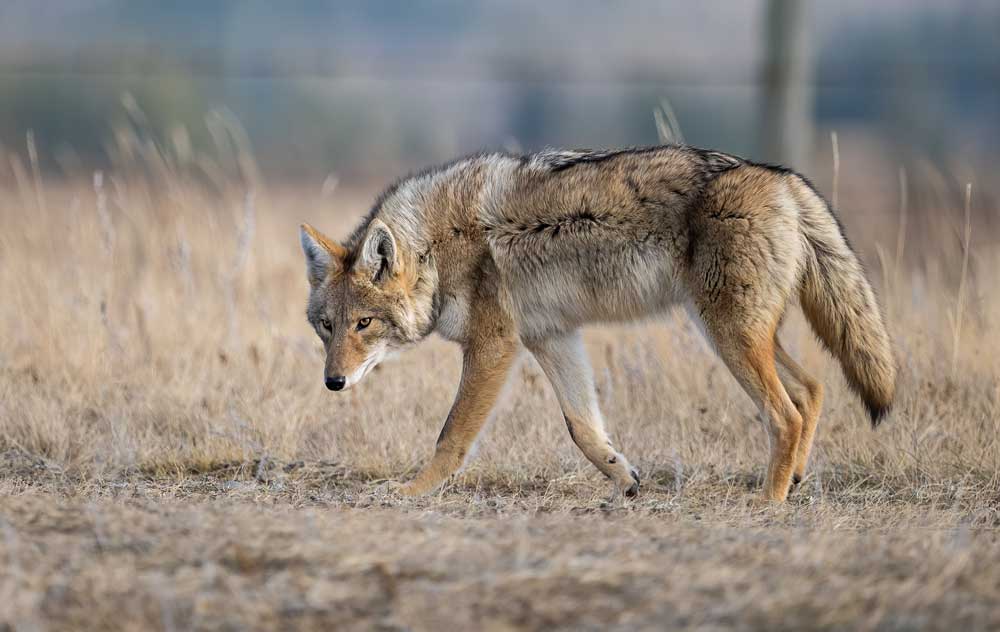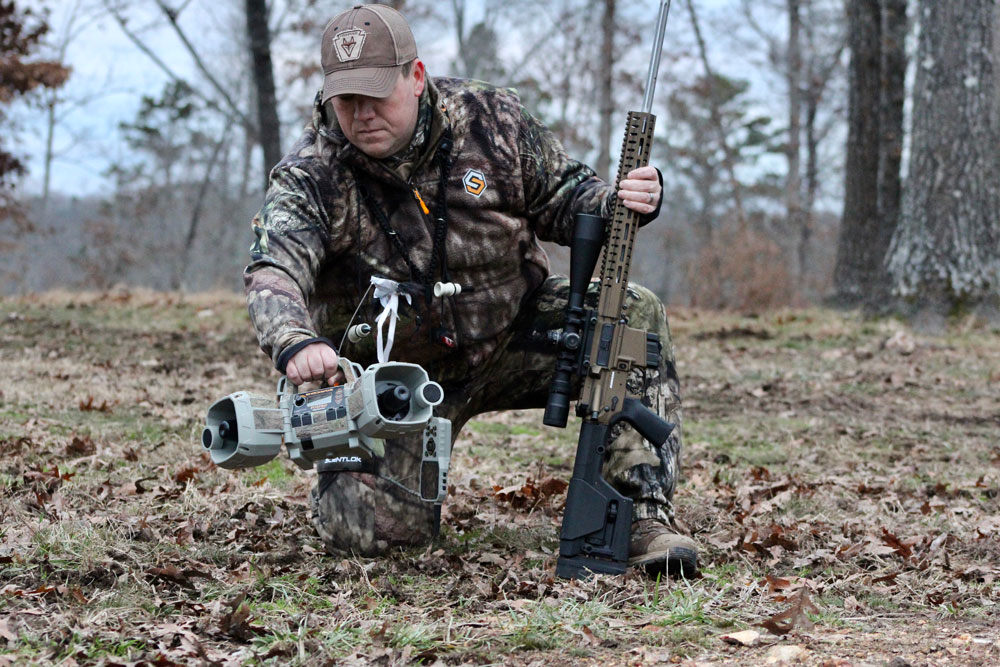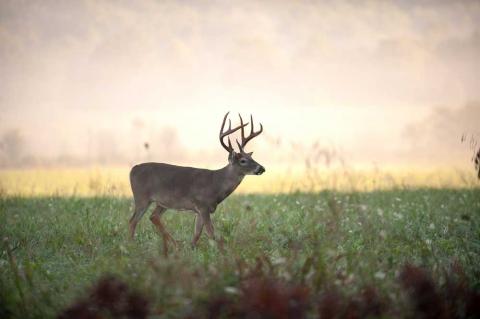Hunting predators is a different sport than hunting more docile animals like deer or quail. Predators have a killer's sensitivity to their surroundings; they're fast and sneaky; they will attack you if they feel threatened. They are smart, wily, and dangerous, but that's what makes hunting them so rewarding.
Whether you're hunting predators for sport or to keep your livestock safe, there are some essential pieces of information you should know concerning your prey's habits and habitats and the gear you will require.

Legality
The first thing you'll want to do is research the laws in your area. Remarkably, there are relatively few laws when it comes to hunting predators. Even so, check with your local game warden (or their website) to make sure your fox or coyote hunt is legal.
Some environmentalists ask hunters why they hunt predators. Hunters respond that they are doing a public service by culling predators to prevent the loss of livestock. There is also the benefit that hunting a predator, a creature that is an impressive hunter in its own right, is one of the most intense thrills a hunter can experience.
Research
The more you know about your prey, the more you'll be able to predict their actions or reactions. You should know what the animal eats, where it likes to sleep, its prey, and its range. Additionally, be mindful of your prey's diurnal or nocturnal activity. For example, knowing the best time to hunt coyotes can influence the success or failure of your hunt.
Once you've learned the laws and regulations of predator hunting in your area and researched the animal you're going after, you're ready to gear up for your hunt.
Shooting Sticks
One of the most critical pieces of gear you'll bring out with you in the wild is your shooting sticks. These tools enhance your accuracy by holding your firearm steady as you aim. They are particularly useful with long shots. If you're hunting predators west of Oklahoma, then you're probably hunting in open plains over lots of miles.
There are a few types of shooting sticks, and it's entirely up to you which one you adopt. Some hunters like the ease and quick set-up of the monopod or bipod, while others enjoy the rock-hard steadiness of a tripod.
Stool
This one may seem like a luxury, but it will honestly save your back and legs during those long stretches when you're waiting for a predator to approach your set-up.
Some hunting vests have a deployable seat built into them so you can double up on two useful pieces of gear—a vest with tons of pockets and a small stool to save your legs from continually falling asleep.
The two aspects you should look for when considering whether you want to bring a small seat or stool (and believe us, you do) is that the stool should keep you close to the ground so as not to draw the predator's attention, and it should be comfortable enough that it's worth your while to lug it out there.
Calls

The other must-haves on your list are your calls. You can bring an electronic call, which you can set up remotely, or hand calls, either open or closed reed. The debate around whether to use hand calls or electronic calls is a heated one, but it comes down to your comfort level.
Electronic calls come with all the bells and whistles. You can trigger them remotely, and a lot of them come with up to 240 calls or more, most of which have been tested in the field by hunters like yourself. You can also change mid-hunt, so, if it seems as if the call you're using isn't bringing your prey to you, you can alter your tactics quickly and easily.
The one disadvantage to an electronic call, especially if you plan on using it remotely (some have a 300-yard range), is that you have to leave your hiding spot to set it up. Additionally, it's a piece of technology, so it's fallible. The great thing about electronic calls is that there are tons of features, but this also leaves room for technological errors like insufficient volume or lack of power.
Many hunters prefer old-fashioned hand calls, and some even make their own out of materials like antlers or bone. You can either use an open or closed reed hand call.
A closed reed hand call is easier to learn how to use, but it doesn't have a lot of variations. With an open reed hand call, however, you can create a lot of different sounds on it, but you have to put in the time to learn how to do it, and it's not easy.
Gun

Arguably the most critical piece of equipment you're bringing on your predator hunt is your gun. Without that, there will be no trophy.
The type of gun you use will depend mainly on your prey. If you're shooting coyotes, for example, you'll want to use a rifle for consistently accurate long-range shots. The most popular types of rounds to shoot coyote with are the .223 Remingtons, Hornets, or .204 Rugers.
The influx of the AR-15s has been a boon to predator-hunters. These powerful firearms have a variety of barrel lengths and configurations. Many also have scopes so that you can zoom in on your prey from long distances.
If you're not hunting coyotes, but hunting bears (with a license) or other big predators that live in a habitat of dense forests or dramatic topography, you'll want something smaller that's easier to handle. Again, knowing your prey's habits and preferences can help you bag a trophy.
The Takeaway
If you're headed out after predators, whether it's to protect your livestock or for sport, you need to have the right gear to get the job done. Shooting sticks, an excellent rifle, a seat, calls, and a foreknowledge of your prey's habits are essential for a successful predator hunt.






























